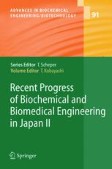Search
Search Results
-
Solid Sulfur Allotropes
Sulfur is the element with the largest number of solid allotropes. Most of these consist of unbranched cyclic molecules with ring sizes ranging from...
-
Aqueous Sulfur Sols
Sulfur Sulfur sols are colloidal colloidal solutions of elemental sulfur or of...
-
Fish and Shellfish Upgrading, Traceability
Recognition of the limited biological resources and the increasing environmental pollution has emphasised the need for better utilisation of...
-
Marine Pharmacology: Potentialities in the Treatment of Infectious Diseases, Osteoporosis and Alzheimer's Disease
Several molecules isolated from various marine organisms (microorganisms, algae, fungi, invertebrates, and vertebrates) are currently under study...
-
Fatty Acids from Lipids of Marine Organisms: Molecular Biodiversity, Roles as Biomarkers, Biologically Active Compounds, and Economical Aspects
Because of their characteristic living environments, marine organisms produce a variety of lipids. Fatty acids constitute the essential part of...
-
Chemistry and Physics of Primitive Membranes
A membrane boundary structure was essential for the advent of cellular life. The membranes of contemporary cells are composed of a mosaic of...
-
Stress Induced by Recombinant Protein Production in Escherichia coli
Strong production of recombinant proteins interferes with cellular processes in many ways. Drainage of precursors and energy urges the cell to...
-
Large-Scale Micropropagation System of Plant Cells
Plant micropropagation is an efficient method of propagating disease-free, genetically uniform and massive amounts of plants in vitro. The scale-up...
-
Analysis and Control of Proteolysis of Recombinant Proteins in Escherichia coli
Proteolysis is one of the reasons for poor production of recombinant proteins in Escherichia coli. Important properties of E. coli proteases, which...
-
Novel Genes Involved in Cephalosporin Biosynthesis: The Three-component Isopenicillin N Epimerase System
Cephalosporin is one of the best β-lactam antibiotics, widely used in the treatment of infectious diseases. It is synthesized by Acremonium...
-
Control of Fluxes Towards Antibiotics and the Role of Primary Metabolism in Production of Antibiotics
Yield improvements in antibiotic-producing strains have classically been obtained through random mutagenesis and screening. An attractive alternative...
-
Simultaneous In Vivo Regeneration of Neodermis, Epidermis, and Basement Membrane
Full-thickness skin loss does not undergo complete spontaneous regeneration in mammals. To restore the normal function of skin, dermal and epidermal...
-
Marine Microalgae
Marine microalgae, the largest primary biomass, have been attracting attention as resources for new metabolites and biotechnologically useful...
-
Bioprocess Engineering Data on the Cultivation of Marine Prokaryotes and Fungi
The temperature/pressure dependency of marine prokaryotes and fungi, in terms of their growth behaviour as well as their potential to produce new...
-
Stochastic “Mirror Symmetry Breaking” via Self-Assembly, Reactivity and Amplification of Chirality: Relevance to Abiotic Conditions
Theories of prebiotic life suggest that homochirality emerged in Nature in abiotic times via deterministic or chance scenarios. This chapter deals...
-
Monitoring of Stress Responses
New developments in the RNA analysis techniques now enable a comprehensive view on the bacterial physiology under bioprocess conditions. The DNA-chip...
-
Clarification of Interactions among Microorganisms and Development of Co-culture System for Production of Useful Substances
Co-culture systems containing two microorganisms for the production of useful substances are described. We developed a novel co-culture system...
-
Bacterial Capsular Polysaccharide and Sugar Transferases
Capsular polysaccharides (CPs) of several pathogenic bacteria are thought to be good materials for the development of new therapeutic reagents. These...
-
Development of Culture Techniques of Keratinocytes for Skin Graft Production
The in vitro cultures of human tissues have attracted a great deal of medical attention as a promising technique for repairing defective tissues in...
-
Heart Valve Regeneration
The valves of the heart cannot regenerate spontaneously. Therefore, heart valve disease generally necessitates surgical repair or replacement of the...
